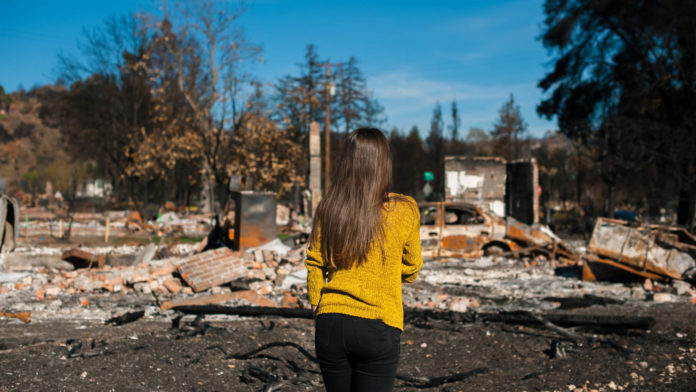Key Highlights
- Wildfires are natural ecological process affecting landscapes but warming climate increase risk of bigger, hotter, faster, more destructive blazes
- More than 40M Americans live in high-risk fire zones as towns increasingly expand into fire-prone landscapes
- Must know risk and keep up with maintenance to improve home’s/building’s chances of surviving wildfire
Wildfire season during the fall and early winter months in the US has become the new normal in much of the West and Southwest as our climate continues to warm at alarming rates.
In California alone, wildfires so far this year have destroyed more than 4M acres and almost 8,000 buildings. Despite this unprecedented damage, buyer demand in wildfire prone areas continues to be high even as home prices soar (+30.1% y/y in Sonoma County). Now add other western and southwestern states, such as Oregon, Washington, Utah, Colorado and New Mexico that are experiencing huge demand and skyrocketing home prices.
One thing that will complicate this demand is an enormous rise in fire insurance rates…and mortgage lenders require fire insurance. Aaron Kirman, founder/CEO of the Aaron Kirman Group at Compass and star of CNBC’s “Listing Impossible,” said that he’s seen annual fire insurance costs jump from $20,000 to $200,000 just during this last quarter.
All this being said, here is a list of questions homebuyers and real estate agents ought to think about asking when considering property located in wildfire-prone areas:
- Has this building ever burned in wildfire?
- – If it’s happened once, it’s a good chance it can happen again
- Many landscapes have vegetation that adapted to regular burning such as grasslands or pine forests
- Wildfires can spread from building to building
- Do research to see what notable wildfires have burned in area
- Check with local zoning office to see what building permits filed for property that could help you understand if home rebuilt at any time
- What are the risks of this neighborhood burning in a fire?
- Fire is natural part of many regions
- Western US, native vegetation accustomed to regular fires
- Most started by people and hot weather and high winds increase chances of extreme fires
- If building older or made of wood, chances higher
- Flammable vegetation near buildings increase risk
- Go to searchable US Forest Service maps that show risks
- States like CO and CA have their own maps
- Check with local fire station, community wildfire group known as fire safe council, Firewise Community
- What makes this building vulnerable and what could be done to make it safer
- Most homes are ignited by embers blown far ahead of fire front
- Low cost home improvements can make a difference
- Building ought to have defensible space or zone with limited flammable vegetation
- Check out how-to guides from CA, CO and ID
- Look at house itself – wood roof, exposed eaves and open attic vents increase chances of ignition – ask for in-person inspection from fire department and/or community fire council
- Ask if it’s challenging to get insurance due to wildfire risk
- Cost could add to mortgage/rent or you could wind up uninsured
- Shop around
- Ask agent, seller and/neighbors if their insurance has been cancelled
- 5.What is the seller or landlord required to disclose to me?
- Know what information you’re entitled to know
- Ask away but most states have no requirements to disclose wildfire risk
- In CA, must fill out a natural hazard disclosure form
- What’s being done to make this neighborhood safer?
- Fire experts say: Your home is only as safe as your neighbor’s
- Is there an evacuation plan in neighborhood
- Check with local fire departments or agency if they have reports on emergency preparedness
- Cost could add to mortgage/rent or you could wind up uninsured
Thanks to NPR and MansionGlobal
Also read: Four Habits to Cultivate to Help You Become Successful, A Tsunami in Commercial Real Estate?, Home Prices +4.8% in July























